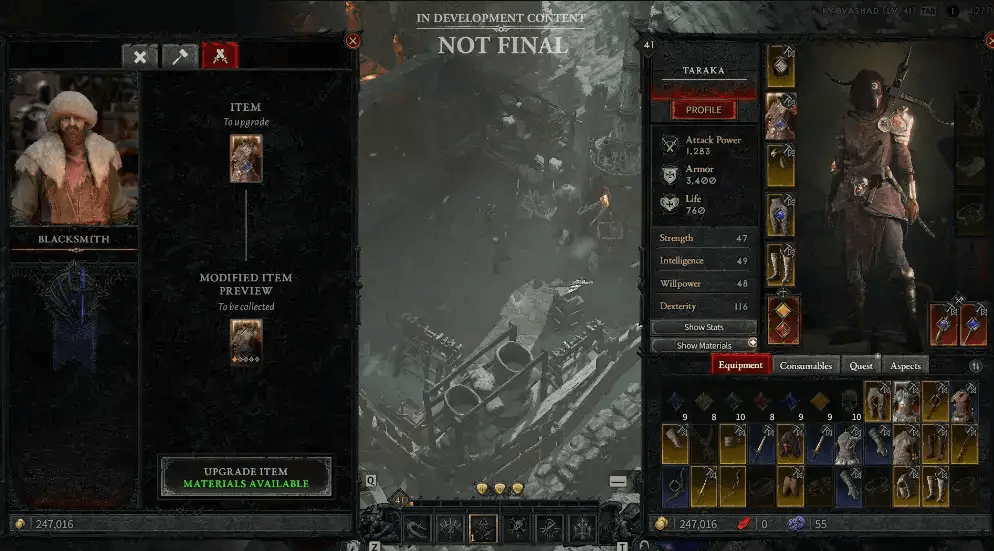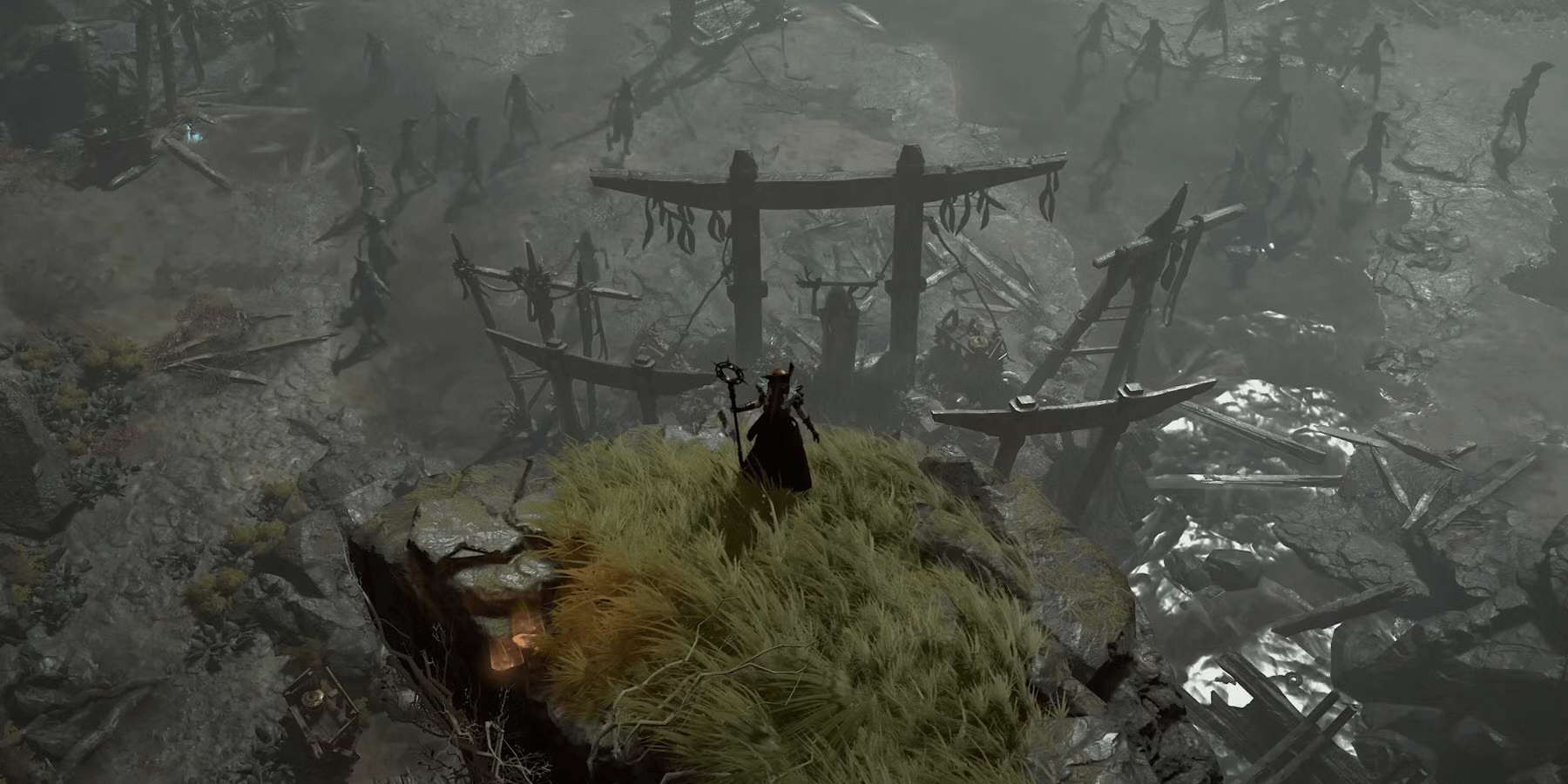Diablo 4 Salvage guide
Diablo 4 is an upcoming action role-playing game that has been eagerly anticipated by fans of the franchise. One of the key aspects of the game is the loot system, which provides players with a wide range of diablo 4 items that they can use to upgrade their characters and become more powerful.
Salvaging is a crucial part of the loot system, as it allows players to extract useful materials and resources from the items they no longer need. In this guide, we will discuss how to salvage items in Diablo 4 and how to get the most out of your loot.
How to Salvage Items in Diablo 4
To salvage an item in Diablo 4, you need to visit a salvage vendor, which can be found in various locations throughout the game. You can also salvage items at the blacksmith's workshop. Salvaging an item is simple; open your inventory, select the item you want to salvage, and right-click on it. A salvage option will appear, and you can click on it to destroy the item and receive the salvage materials.
Types of Diablo 4 Salvage Materials
There are several types of salvage materials in Diablo 4, and each serves a unique purpose in crafting and upgrading items. The most common types of salvage materials include:
Common Debris: These are basic materials that can be used in simple crafting recipes. They are easy to obtain and are used in the majority of crafting recipes.
Rare Debris: These are more advanced materials that can be used in more complex crafting recipes. They are less common than common debris and are used in higher-level crafting recipes.
Gems: These are special materials that can be socketed into equipment to enhance their attributes. There are several types of gems, each with its unique set of attributes. For example, an emerald can increase critical hit damage, while a ruby can increase damage against elites.
Runes: These are ancient symbols that can be used to augment skills and abilities. There are several types of runes, each with its unique set of effects. For example, a rune may increase the duration of a skill or reduce its cooldown.
How to Get the Most Out of Your Loot

To get the most out of your loot, it's essential to know which items to salvage and which to keep. In general, you should salvage items that are lower level or lower quality than the items you are currently using. This will free up inventory space and provide you with salvage materials that you can use to upgrade your gear.
However, some items may be worth keeping even if they are lower level or quality. For example, items with unique or rare affixes may be valuable for specific builds or playstyles. Additionally, items with high rarity or unique cosmetic appearances may be worth keeping for collection purposes.
Another way to get the most out of your loot is to prioritise certain stats when selecting items to keep. For example, if you are playing a melee character, you may want to prioritise items with high strength and vitality stats. Alternatively, if you are playing a ranged character, you may want to prioritise items with high dexterity and critical hit chance stats.
Read More: Diablo IV Character Classes Guide
Crafting with Salvage Materials
Salvage materials can be used to craft new items or upgrade existing ones. To craft an item, you need to visit a blacksmith's workshop and select the item you want to craft from the available recipes. You can then use the salvage materials you have collected to craft the item. Crafting an item requires a certain amount of salvage materials, and the required materials vary depending on the item's rarity and level.
Upgrading items is another way to use salvage materials. To upgrade an item, you need to visit a blacksmith's workshop and select the item you want to upgrade. You can then use the salvage materials you have collected to upgrade the item's attributes.
Benefits of Salvaging in Diablo 4
Salvaging not only helps you obtain valuable materials and resources, but it also offers several other benefits in Diablo 4.
First, salvaging allows you to clear up inventory space. As you progress through the game, you will accumulate a lot of items, and it can be challenging to manage your inventory. Salvaging items that you don't need can help free up space, making it easier to manage your inventory and keep track of your loot.
Second, salvaging can provide you with a source of income. Salvage materials can be sold to vendors, and some materials can be sold for a high price. By salvaging items and selling the materials, you can earn diablo 4 gold and purchase other items or gear that you need.
Third, salvaging can help you learn about the game's mechanics and itemization. As you salvage items, you will begin to learn which items are valuable and which are not. This knowledge can help you make better decisions when it comes to managing your inventory, trading with other players, or deciding which items to keep and which to salvage.
Read More: Diablo 4 Skill Tree Guide
Farming Salvage Materials in Diablo 4
Farming is a common practice in Diablo 4, and it involves killing monsters and completing quests to obtain loot and other valuable items. If you want to farm salvage materials, you can focus on killing monsters that drop the materials you need.
For example, if you need common debris, you can farm low-level monsters that are easy to defeat. Alternatively, if you need rare debris or gems, you may need to farm higher-level monsters that are more difficult to defeat. You can also complete bounties and other quests to obtain salvage materials as rewards.
Tips for Salvaging Efficiently
To salvage items efficiently, there are several tips you can follow. First, you can use the "salvage all" feature to salvage all of your unwanted items at once. This feature is available at the salvage vendor, and it allows you to salvage all of your items with one click. However, be careful not to accidentally salvage items that you want to keep.
Second, you can use the "compare" feature to compare items before salvaging them. This feature allows you to see the differences between two items, such as their stats and affixes. By comparing items, you can determine which one is better and which one should be salvaged.
Third, you can use the "mark as junk" feature to mark items that you want to salvage later. This feature allows you to quickly mark unwanted items, so you don't have to sort through your inventory every time you want to salvage items.
Finally, you can use salvage materials wisely by focusing on the materials you need the most. For example, if you need gems for socketing, you should prioritise farming monsters that drop gems or completing quests that offer gem rewards.
Conclusion
In conclusion, salvaging is a crucial aspect of Diablo 4 gameplay that offers many benefits to players. By salvaging unwanted items, players can acquire valuable materials and resources, clear up inventory space, and earn gold. Incorporating salvaging into your gameplay strategy can help you achieve success in the game. If you're interested in learning more about Diablo 4, be sure to check out our other Diablo 4 guides for a deeper understanding of the game's world and mechanics.



